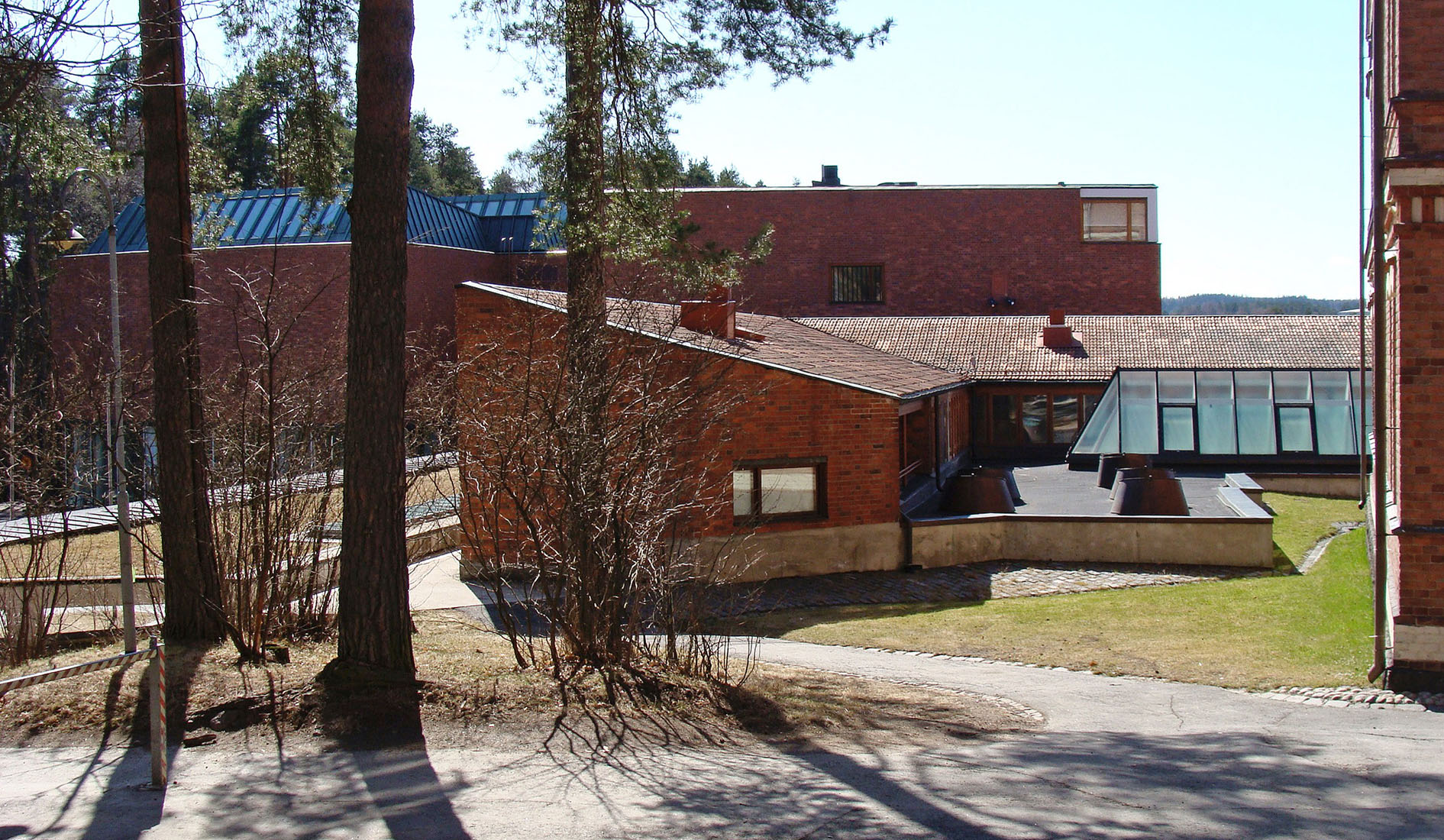 |
 |
 |
 |


Jyväskylä University Library
Seminaarinkatu 15, Jyväskylä
1952 - 1958
In 1950 Alvar Aalto took part in the general planning competition for the Jyväskylä Institute of Pedagogics. His proposal 'Urbs' was awarded the first prize at the end of May 1951, and the achitect was immediately commissioned to begin working on the plans of the various buildings. His proposal, reminiscent of some of his earlier projects, consists of several individual buildings, which are arranged in a U-shape, respecting the existing buildings of the complex. The central space, which is framed by the complex, is accessible only for pedestrians. Located in a ridge of pine trees close to the centre of the town, Alvar Aalto designed another piece of architecture in tense relation to the surrounding nature. Construction of the complex started in 1953, and within three years a major part of the complex was concluded, even if Alvar Aalto worked for several further years to design various buildings and additions. All buildings of the Jyväskylä Institute of Pedagogics expose Alvar Aalto's emphasis on materiality, combining white walls with wood, brick and glass. The whole complex contains buildings for various functions and was initially built for teacher training. In 1966 the college of education became a university.
The Library of the Jyväskylä University was already part of the winning competition entry from 1950, although the competition programme did not ask for such a function. The library is located near to the main building, and becomes part of the existing landscape. The colonnade of the library demarcates the university entrance on one side, while on the other side a low brick wall confines the court. The exterior of the library, seen from the park, does not appear as a building, but rather as another supporting wall defining space and acting as a plinth for the exising buildings. The almost windowless volume of the library is two stories high and is covered by a flat roof, resulting in a rather closed impression. When viewed from the entrance court, the building and its rooflights are mostly hidden. The reading room is lit from top by a long prism-shaped celerestory. This large and longish rooflight has a double-triangular crossection and is comparable to the rooflights of the Academic Bookstore and the National Pensions Institute. Additionally there are six barrel skylights. The interior space of the library develops according to the principle of the 'sunken library', first conceived for the famous Viipuri City Library. The book shelves are arranged along the edge of the central reading hall, which is located at a lower level. The university started to move its book collection into the library in 1958, but only in 1961 it was fully furnished.